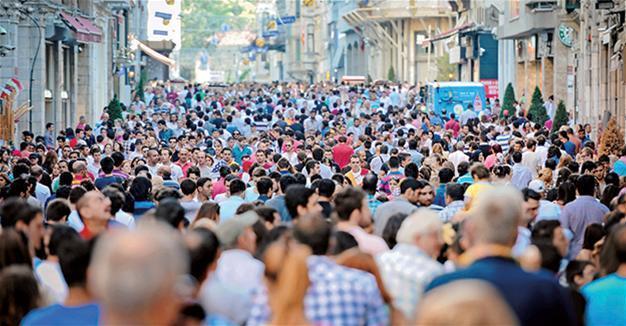Turkey’s fertility rate falls to critical level of 2.1 for first time since WWI
Bülent Sarıoğlu - ANKARA
 Turkey’s fertility rate hit the replacement level of the population in 2016, at 2.1 children, according to 2016 birth statistics released by the Turkish Statistical Institute (TÜİK) on May 18.
Turkey’s fertility rate hit the replacement level of the population in 2016, at 2.1 children, according to 2016 birth statistics released by the Turkish Statistical Institute (TÜİK) on May 18. This means that on average, a woman aged between 15 and 49 in Turkey gave approximately 2.1 live births during her reproductive life, as the fertility rate of 2.1 per woman is the figure necessary to generate a stable population within a country.
The fertility rate has been declining consistently every year in Turkey. It was 2.8 in 1990, 2.17 in 2007, and 2.15 in 2015.
“The latest TÜİK figure is now at the critical threshold. There is no country in the world that has fallen below 2.1 and then gone back above it. If you lose that level very easily, then recovering is very difficult. In the latest example, Russia is trying to give people incentives even for children born out of wedlock. All of Western Europe is getting older,” said ruling Justice and Development Party (AKP) lawmaker Cengiz Aydoğdu, a former general director of the Population and Citizenship Affairs General Director.
“We noticed the decrease in fertility at the beginning of the 2000s. At the sessions in which TÜİK participated, [the Ankara-based] Hacettepe University Institute of Population Studies had said ‘2.14 children per woman was the critical level for the population.’ It was forecasted that the increase in the population would stop in the 2020s and a decrease would take place at a population level approximating 90 million,” Akdoğdu said.
There were 1,333,771 live births in 2016 in Turkey, according to TÜİK’s figures. Up to now, TÜİK has always used the term “above the replacement level of population” for Turkey’s fertility rate, but for the first time in 2016 it said the rate was “at the level of the replacement.”
In 2016, the province with the highest total fertility rate was the eastern province of Şanlıurfa, which holds the most number of Syrian refugees after Istanbul, with 4.33 children. Şanlıurfa was followed by the eastern provinces of Ağrı, Siirt and Şırnak.
The provinces with the lowest total fertility rate was Karabük in the Black Sea region with 1.46 children.
Karabük was followed by the western provinces of Edirne and Kırklareli with 1.48 children and the Black Sea province of Zonguldak with 1.50 children.
The United Nations, meanwhile, had forecast a fertility rate of 1.85 for Turkey in 2016, lower than TÜİK’s forecast of 1.95 children. The fact that the actual figure was above the forecasts is thought to be down to the 70,000 Syrian refugee babies born every year in the country, but there are no official figures on the degree to which the birth rate of Syrian refugees affected the official fertility rate.
















